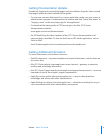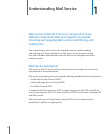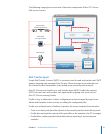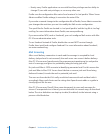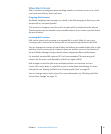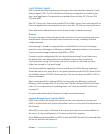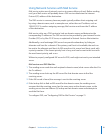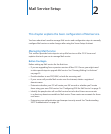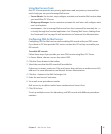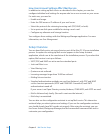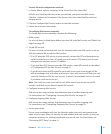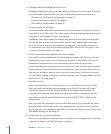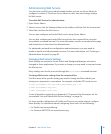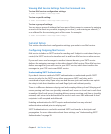
Chapter 1 Understanding Mail Service 19
Using Network Services with Mail Service
Mail service makes use of network services to ensure delivery of mail. Before sending
mail, your Mail service will probably have a DNS service determine the Internet
Protocol (IP) address of the destination.
The DNS service is necessary because people typically address their outgoing mail
by using a domain name, such as example.com, rather than an IP address, such as
198.162.12.12. To send an outgoing message, Mail service must know the IP address
of the destination.
Mail service relies on a DNS service to look up domain names and determine the
corresponding IP addresses. The DNS service can be provided by your Internet Service
Provider (ISP) or by Mac OS X Server, as explained in Network Services Administration.
Additionally, a mail exchange (MX) record can provide redundancy by listing an
alternate mail host for a domain. If the primary mail host isn’t available, the mail can
be sent to the alternate mail host. An MX record can list several mail hosts, each with
a priority number. If the lowest priority host is busy, mail can be sent to the host with
the next lowest priority, and so on.
Without a properly congured MX record in DNS, mail might not reach your intended
server.
Mail service uses DNS like this:
1 The sending server reads the mail recipient’s domain name (what comes after the @ in
the To address).
2 The sending server looks up the MX record for that domain name to nd the
receiving server.
3 If the MX record is found, the message is sent to the receiving server.
4 If the lookup fails to nd an MX record for the domain name, the sending server
assumes that the receiving server has the same name as the domain name, so the
sending server does an Address (A) lookup on that domain name and attempts to
send the le there.
To congure DNS, see “Conguring DNS for Mail Service” on page 21.



